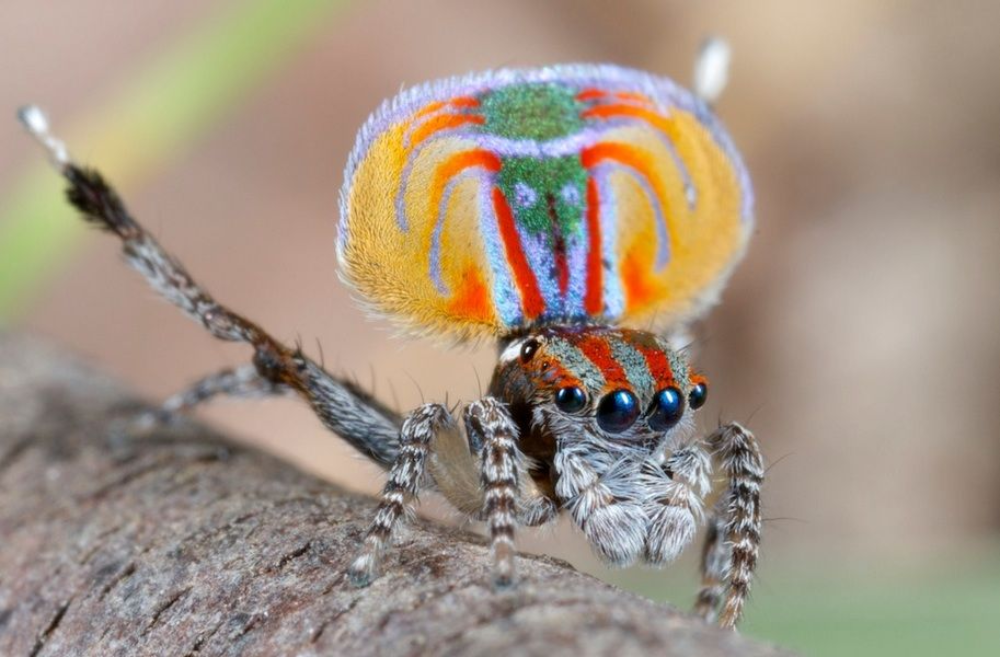In the realm of the animal kingdom, where survival often depends on camouflage or intimidation, the Peacock Spider (Maratus) stands out as a testament to the sheer wonder and diversity of nature. Despite their diminutive size, these arachnids captivate both scientists and enthusiasts alike with their dazzling displays of color and intricate courtship rituals. Let’s embark on a journey into the fascinating world of the Peacock Spider, exploring its behavior, habitat, and the ongoing efforts to conserve these miniature marvels.
Understanding the Peacock Spider
Peacock spiders belong to the genus Maratus, a group of jumping spiders found primarily in Australia. What sets them apart from other spiders is their vibrant and elaborate coloration, particularly in the males. These tiny creatures, measuring only a few millimeters in length, sport an array of iridescent hues reminiscent of their avian namesake, the peacock.
The most renowned aspect of the Peacock Spider is undoubtedly its courtship dance. Males employ a combination of intricate movements, vibrant colors, and rhythmic vibrations to woo potential mates. Each species has its own unique display, with some resembling elaborate fan dances and others incorporating rapid leg movements and flashing abdominal patterns. These displays not only attract females but also serve as a form of species recognition, ensuring successful mating.
Habitat and Distribution
Peacock spiders are predominantly found in Australia, with the greatest diversity occurring in the southern and eastern regions of the country. They inhabit a variety of environments, including forests, scrublands, and even urban gardens. Despite their small size, these spiders play a vital role in maintaining ecological balance by controlling insect populations.

Conservation Challenges
Like many species around the world, Peacock Spiders face threats to their survival due to habitat loss, climate change, and human activities. Urbanization and land development encroach upon their natural habitats, leading to fragmentation and loss of suitable environments. Additionally, pollution and pesticide use pose indirect risks to these spiders by disrupting their prey base.
Conservation efforts aimed at protecting Peacock Spider populations are gaining momentum. Researchers work tirelessly to document and study these creatures, shedding light on their ecological importance and habitat requirements. Community engagement and public awareness campaigns raise consciousness about the plight of these tiny arachnids, inspiring action to conserve their habitats and mitigate threats.
Future Perspectives
Despite the challenges they face, Peacock Spiders continue to enchant and inspire awe in those who encounter them. Their intricate displays and vibrant colors serve as a reminder of the boundless beauty and diversity of the natural world. As we strive to conserve these remarkable creatures, we also reaffirm our commitment to preserving the ecosystems they inhabit and the delicate balance of life on Earth.
Conclusion
In the intricate tapestry of the natural world, the Peacock Spider emerges as a tiny yet extraordinary gem, captivating hearts and minds with its vibrant colors and mesmerizing dances. As we delve deeper into the secrets of these miniature marvels, let us also pledge to safeguard their habitats and ensure that future generations can marvel at the enchanting spectacle of nature’s tiny technicolor wonders.









